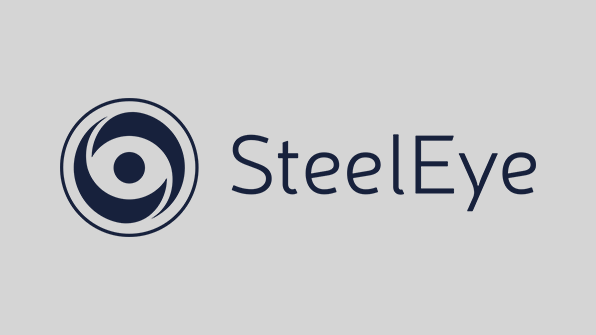Why do you feel that your company has been nominated by the panel?
We are very grateful to EY for recommending Mambu to the judging panel. We feel the nomination is a reflection of our reputation as the leading SaaS banking engine and our proven track record of providing best-in-class service to innovative banking and lending institutions. Our success illustrates the increasing demand for cloud-native solutions that drive innovation, enhance operational efficiency, provide flexibility and enable the great customer experience needed to succeed in the highly competitive digital banking market.
Mambu supported OakNorth’s vision of becoming Europe’s first fully regulated cloud-based bank and helped them achieve profitability in only 11 months by reducing their operating costs by 60%. We have also helped N26 scale operations to support their exponential 500% growth and expansion to 17 countries. We are collaborating with established institutions like ABN AMRO which is seeking to differentiate itself through the launch of its own FinTech, New10 which offers innovative lending products and provides Dutch SMEs with credit decisions in 15 minutes. The project went from concept to launch in 10 months with the Mambu implementation taking just four months.
Why was the company set up? How did you select the vertical and decide to be a part of the global FinTech community?
Cloud technology was disrupting industries, with internet and smartphone penetration becoming the norm, even in remote regions. The three Mambu co-founders identified an opportunity in the financial industry, legacy approaches to building banking technology were too expensive, slow and cumbersome. Their idea was to bring lending and banking technology into the 21st century via the cloud, making it accessible to projects of any size and flexible enough for any market opportunity.
Mambu now works with a broad range of clients from, traditional tier-one financial institutions to FinTech revolutionaries. We help providers to rapidly launch a digitally native financial services platform without diving into the hassle of a custom, in-house solution in the highly regulated finance industry. Mambu helps clients to successfully start up new business ventures, transform existing operations, launch new products and expand into new markets.
We are proud to be part of the global FinTech community, our cloud-native solution is now running over 180 live operations with more than 6,000 loan and deposit products in over 45 countries, serving more than 4 million end customers.
What is your company looking to achieve in 2018?
2018 will be a very exciting year for Mambu, we expect to accelerate our growth and geographical expansion into the Americas and Asia-Pacific. We will continue to invest in innovation adding more functionality to our solution to keep pace with the needs our clients and the market.
What challenges did you face in your initial years? What can your peers learn from it?
Our initial challenge was time to adoption as banks and financial services are traditionally reluctant to adopt new technology. But the speed, agility and of cloud technology are undeniable, the industry saw the strengths and there was a strong push to accept it with more regulators not only approving but encouraging its use.
The next challenge was convincing institutions to take a risk on being one of the first to implement Mambu, which was at the time a new and untested product which would own and control their mission-critical data like customer details, transactions, and financial data.
As every institution is at a different stage on the technology adoption curve, we worked on providing the right value for them at the right time, from speed to market to speed of change, in order to overcome the perceived risks of both cloud and new technology. Once the value perception of initial cost, and then speed to market and speed to change was higher than the perceived risk of being an early adopter, we were able to gain customers and traction and build on top of that.
What our peers can learn from the Mambu story is that while FinTech is fast moving, the market, especially in B2B, may not be so quick to adopt. So if you are getting into the business, know that you are signing up for a marathon, not a sprint.
What do you see as the major trends for the year ahead?
We expect that innovation will continue transforming the digital banking landscape.
In addition to competition from nimble new banking and lending entrants, traditional institutions face struggling business models, huge legacy costs, regulatory changes such as open banking and ever-evolving consumer demands.
Incumbents Launching FinTechs Spinoffs
Prompted by these pressures, we are seeing a growing trend of established financial institutions looking to launch their own FinTech or digital bank. It’s a concept we refer to as ‘launching speedboats from cruise ships’. These spin-offs combine the best of two worlds, the resources, and experience of an incumbent with the technology and culture of a FinTech.
More Than Monoline
Many FinTechs which disrupted the market with innovative but monoline offerings, now find themselves critically limited by their initial business model and internal development.
With increased competition and saturated niche markets, their business needs have evolved to focus on growth and diversification and their technology must also evolve in order to support these objectives. We see these companies seeking out new technology to support their long-term strategy.
API-driven ecosystems
Both FinTech and traditional institutions are shying away from internal development due to the significant time and resource implications. Instead, they are looking to build operating models using SaaS and API-driven ecosystems at their core, developing a composable architecture. The composable approach embraces thinking that one company cannot focus on everything and be the best at it. The architecture can be divided into small pieces and managed through life cycles separately and tested, removed or replaced without risk.
Taking a composable approach enables the use of best of breed providers. Each company is focused on a specific part of the architecture from the SaaS engine to chatbots or credit scoring, to analysing customer data insights. All of these combine to create a better user experience.
Apart from flexibility, this composable approach prepares organisations for innovation and the next market shift. The digital banking space is dynamic and evolving at a rapid pace and companies with a composable architecture will be ready to adapt to continue delivering innovative services to their consumers.





